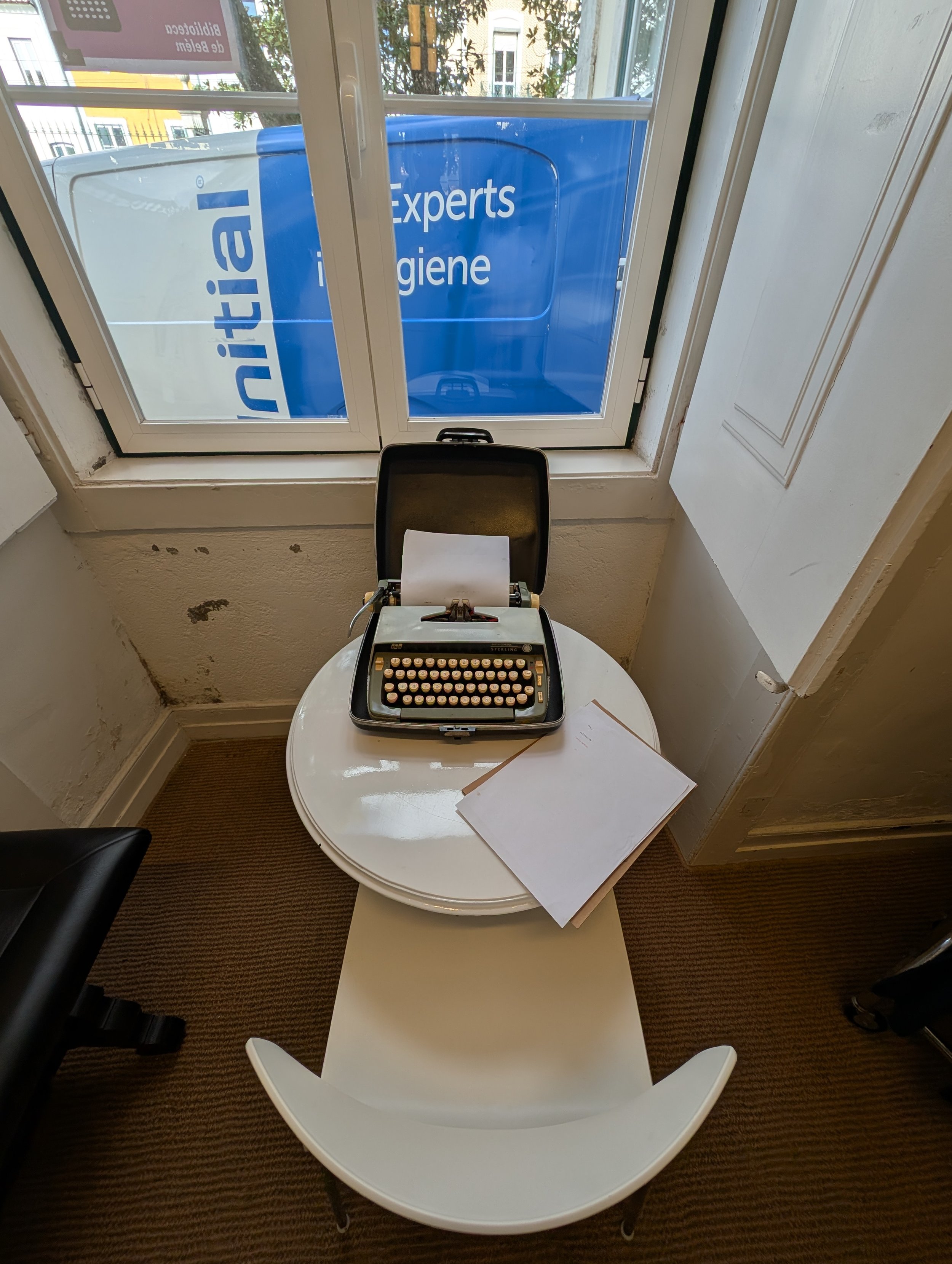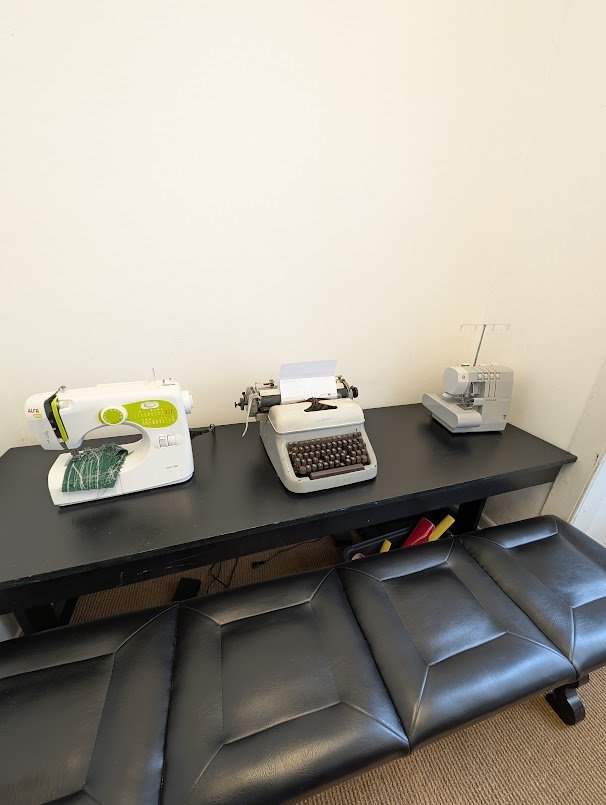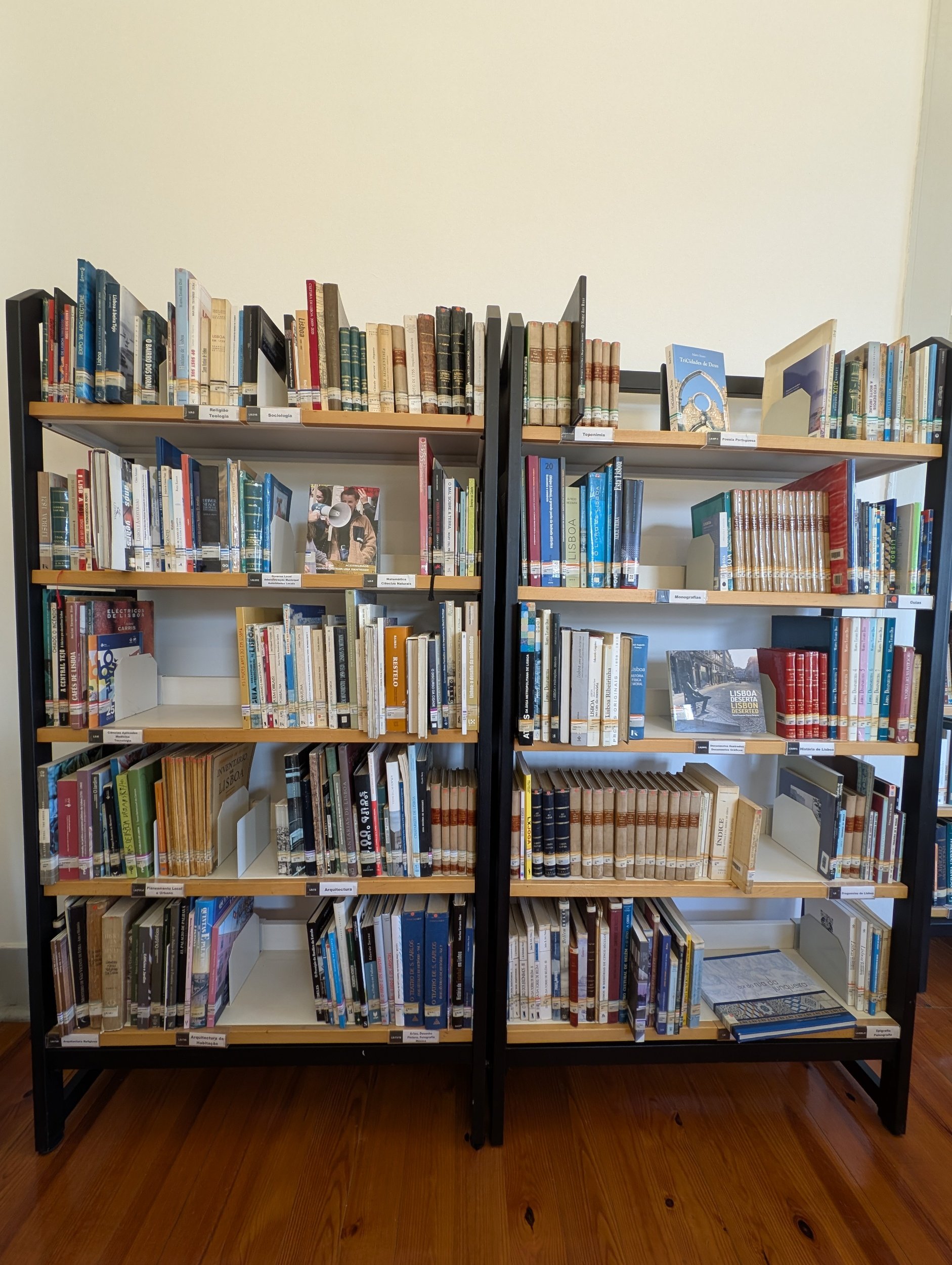Biblioteca de Belem, Lisbon
It is easy to get swept up in the physical experience of a public library. One’s first impression of a library is its exterior - the landscape around it, the style of its architecture, and the materials used. Upon entering, you observe more - the interior design, the organization, the general vibe. All of those things are important, but they are only a part of the story.
What has made libraries such fun to visit and discuss are the people inside them. That was certainly the case when we visited the Biblioteca de Belem branch of the Lisbon public library system. Let’s start with the physical experience of the library.
The Belem branch is located in what appears to be a house set back from the street. In the front, there is a lovely garden, more on that later. When we arrived, the library was closed but would be opening soon. We went around to the back where there were a few orange trees and a small lunch spot. It was lovely. When we finished, we made our way back around.




Inside, all was hushed. The air felt still but inviting. Broad black and white tiles covered the floors, and the walls were simple white plaster. The library’s design is one of many separate rooms, rather than a few large open spaces. This made exploring fun. After looking around for a while, I realized I’d need a guide to appreciate the library. I was sure lucky when the staff connected me with Filipa Barros, the head of the library.
I spent an hour walking through the library with Filipa, and that was magical. We talked about what was happening at libraries in both our countries. We talked about the issue of neutrality and how it is neither possible nor desirable, and agreed that neutral support for a screwed up status quo is unacceptable.
When asked about her favorite part of the collection, she led me to a large room that contains the library’s feminist collection. I work in a large library with a strong social science section, but this collection - primarily the 305s, 323s, and 324s - is easily in the thousands of volumes. It was started in the 1970s and has grown and been maintained ever since.
She talked about this collection and the how her patrons think about the topic. Filipa explained that many of the older women in the community balk at the word feminism. When the word is removed and the underlying issues discussed, these same people agreed that they’ve experienced them. It was a great example of depoliticizing an issue so it could be discussed.






Next, she showed me the lovely roof patio with views of the river. Their budding makerspace, which is evolving through trial and error, was also a highlight. It was excellent to hear how the library is responding to the needs of the community, even if they don’t always get it right. Another interesting example is a room made available to artists. It’s not quite ready for full public access, but many artists have used it as studio space.
The library does a lot of partnering with the community. Filipa talked about bike clubs, garden groups, and women’s groups. The garden in front of the library features a nice compost pile. That, she explained, was available for guerrilla gardeners around the neighborhood. Each community group had different needs and expectations of the library, and it sounds like the experiences of each have been positive.
That’s not surprising given the passion Filipa brings to her library. It was infectious, and a real treat to spend time here and be inspired!


